6 min read
What’s in my bag? Video gear essentials when shooting and editing on the road
![]() Wipster Content Team
:
Aug 31, 2021 5:30:00 AM
Wipster Content Team
:
Aug 31, 2021 5:30:00 AM
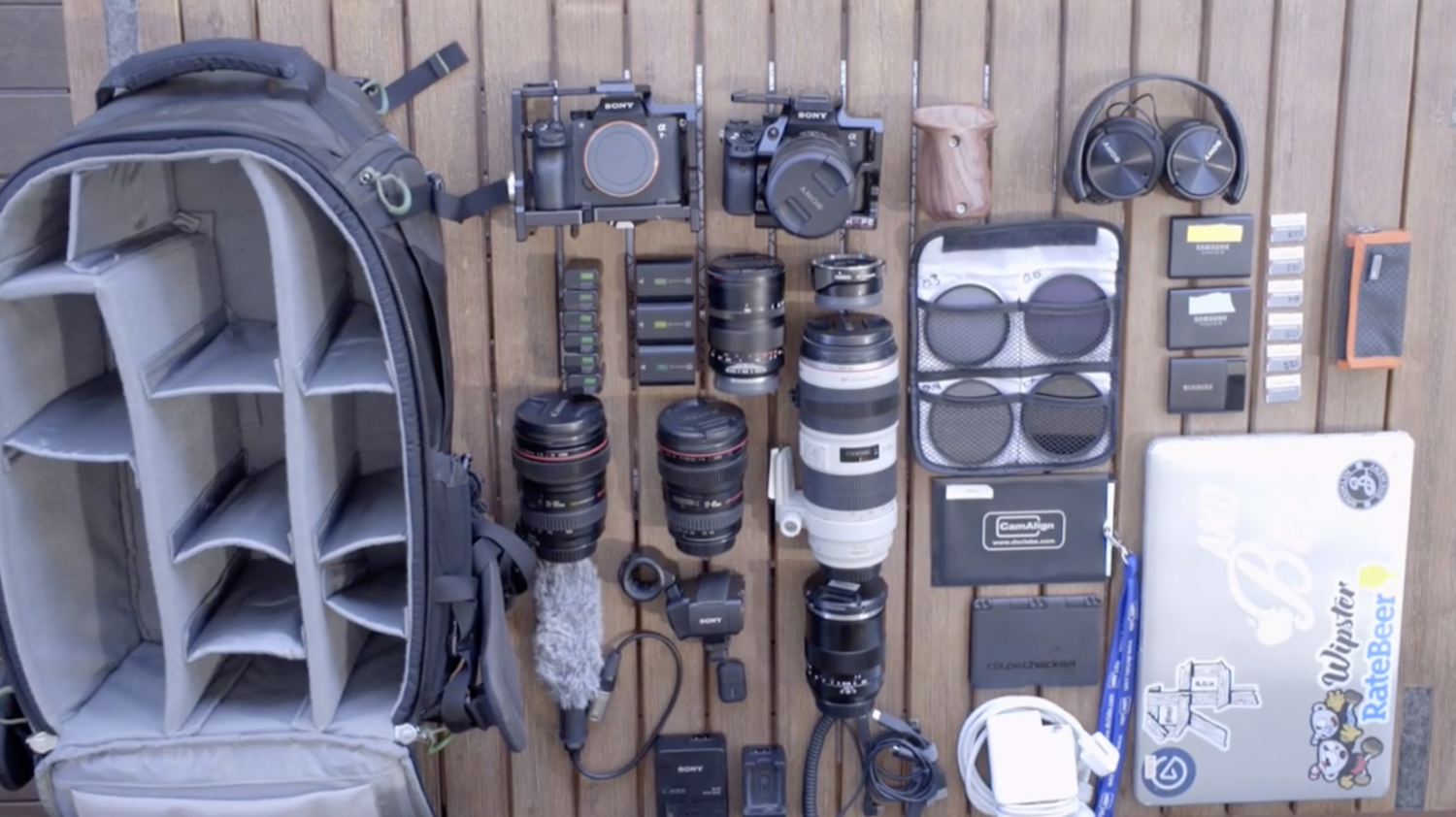
Before we start with "What’s in my bag", we need to start with the why.
I’m a filmmaker who travels a lot for the projects I’m working on, working regionally, interstate and internationally. As part of this, I’ve needed to design a production kit that is mostly carry on, and has multiple layers of redundancy as I’m often working in regions where I can’t just rent or buy another camera / lens / whatever if something fails.
The Bag
My kit starts with the bag. It’s a MindShift Gear FirstLight 30L. Previously I had the 20L version of this bag which was awesome but proved to be a touch too small. The why of this bag is that it's light, holds a lot, and still conforms to carry on size. This is super important.
All of my absolutely vital ‘can’t do without’ gear goes in here. I’m working with the idea that if I’ve got that bag, I can do the job, and if I don’t have that bag, I can’t do the job, hence the need for it to be carry on as so much of my work involves getting on a plane.
Whilst I’ve had *reasonably* good luck with baggage turning up at the other end, I can’t risk a clients production, and associated travel costs on the chance that my bag won’t turn up at the other end of the flight or flights
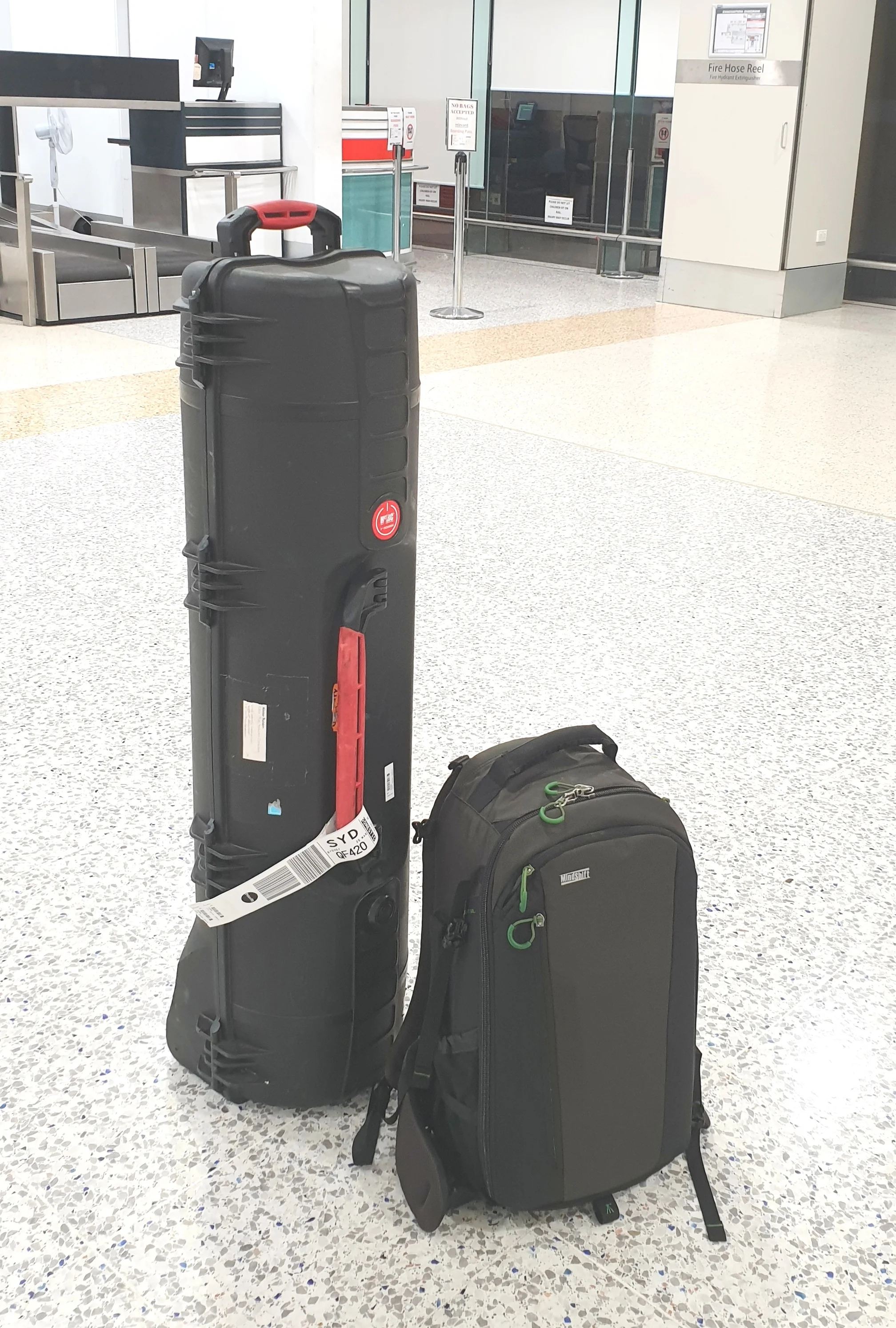
Cameras
Over the last few years, I’ve been making the transition from Canon to Sony. I bought a Sony A7s a few years back as a B camera and fell in love with the dynamic range, useable ISO range, and the color, all in this ultra-compact camera body. It quickly went from being my B camera to the camera I was shooting almost all of my projects with.
After selling my Canon C100 and Sony FS700R, I then added a Sony A7S II and an A7R III. The A7S II tends to live on the gimbal and is handy for low light work, and the A7R III is for interviews, hero shots, and stills. Beyond how good the pictures look, they’re also tiny, which means I can carry multiples in one bag. In some instances, I’ll have the A7S, A7S II, and A7R III all in the same bag.

We’re shooting everything as 4k UHD these days, so the A7S doesn’t get out as much, but it’s still handy when hooked up to a 4k recorder as a 3rd camera. We’re using SLOG3 on both the main cameras which makes them easier to match in Post Production and means I can seamlessly work between the two on set. I also always carry at least two camera bodies in case something happens to one of them.
-
Sony A7S II with ShapeWLB Cage
-
Sony A7R III with ShapeWLB Cage and Small Rig wooden handle with record trigger
“Golden rule: Always have a spare camera. In fact, always have a spare everything.

Lenses
My lens set at the moment is a legacy of my previous Canon cameras. I’m contemplating a shift to an all native Sony e-mount set, but I’m in no rush because the Canon glass still looks great. I do have one native Sony lens that lives on one of the cameras as the ‘pull it out of the bag and just shoot’ lens.
“This means if I turn up somewhere, and there’s something amazing happening, I can have a camera in hand and be filming within seconds.
We’re shooting everything with SLOG3 on the Sony Alpha cameras, so carrying Neutral Density filters is a must. I’ve got an ultracompact set of Formatt Hitech Firecrest circular ND’s which live in the backpack, and then a larger set of Formatt Hitech Firecrest 100mm ND’s and grads that live in the tube as they just don’t fit in the backpack.
-
Canon 24-105mm f4
-
Canon 17-40mm f4
-
Canon 70-200mm f2.8
-
Sony 24-70mm f4
-
Zeiss 100mm f2
-
Mitakon Zhongyi Speedmaster 50mm f0.95
-
Formatt Hitech Firecrest Circular ND 0.3, 0.6, 0.9, 1.2 with adaptor rings
-
Metabones EF to e mount adapter

Audio
For audio, I run light in the backpack and have the full audio kit in the tube. I know I can get great results out of the Instamic Pro, but clients feel a little more comfortable when we’re working with the bigger microphones, and I appreciate the versatility of the full audio kit. The XLR-A2M from Sony is great as it adds proper audio connections and proper audio control to any of the alpha cameras and saves bringing along another recorder.
-
Sony XLR-A2M 2 channel XLR input
-
Sony ECM-XM1
-
Instamic Pro
-
Sony noise canceling headphones
Batteries
-
10 x Sony NP-FW50
-
3 x Sony NP-FZ100
-
1 of each charger required
Colour management
We end up filming in a lot of mixed lighting conditions so color management on set is very important. We’re using the DSC Labs CamAlign for white balance, and to tilt white balance if needed, and then the X-Rite Colour Checker Passport as a backup plan.
-
X-Rite Colour Checker Passport
-
DSC Labs CamAlign
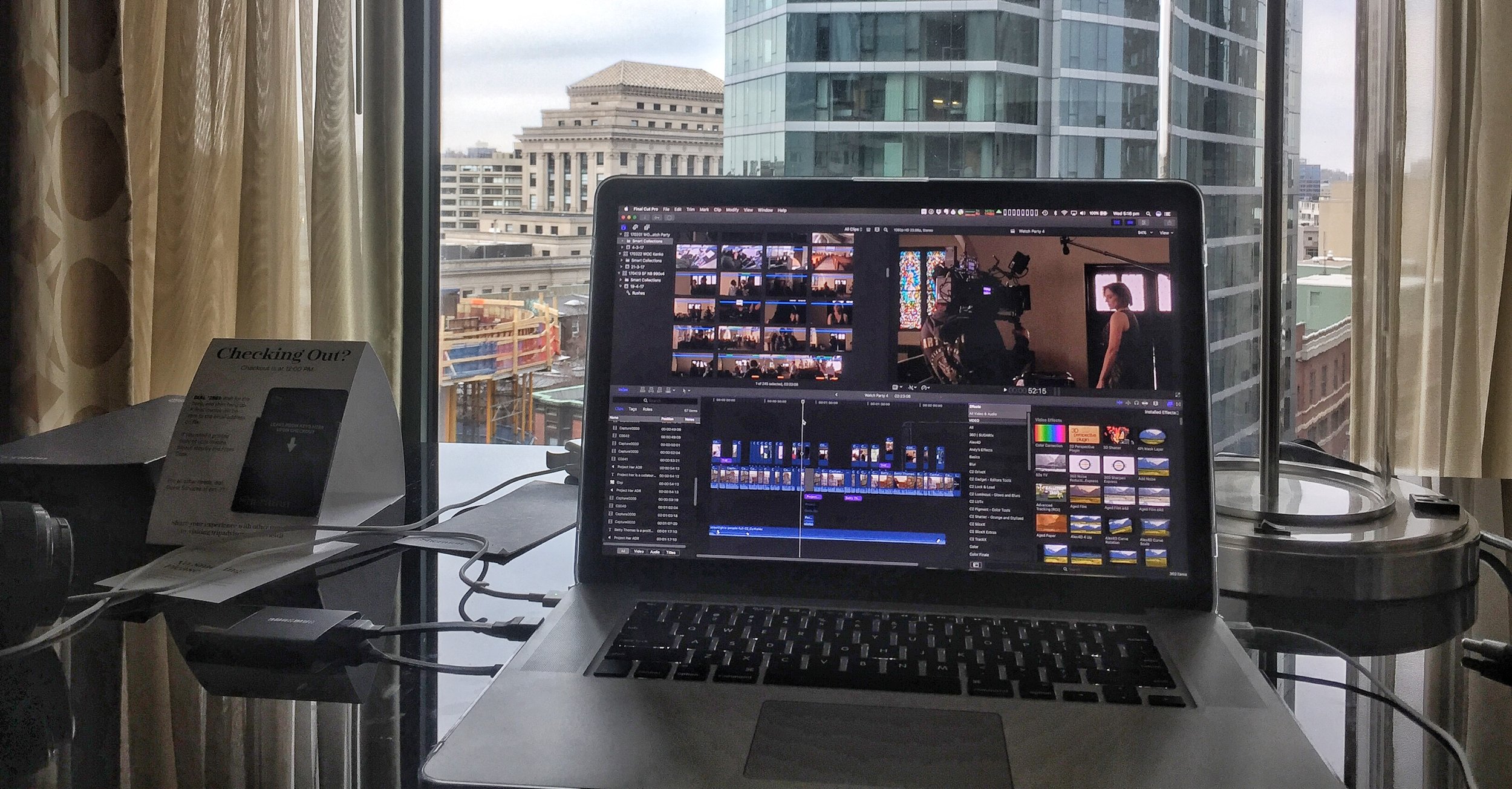
Computing
Travelling a lot means I need to be able to edit on the go, and also back up my camera data while on location. As with the rest of my kit, there are always multiple layers of redundancy. The three Samsung SSD’s are crazy fast, and amazing for initial data management and getting the first backup done in minutes.
I use one of the SSD’s for editing on the go as well as it’s amazing to edit from. I have the other two SSD's purely as backups, and so I can bring all active projects with me when traveling, just in case… In terms of SD and Micro SD, I’m using mostly Samsung cards these days, and carry enough cards with me that I can shoot for a bit over a week without having to offload. I offload and backup every night of course, but this means I don’t need to clear cards so the cards become yet another layer of backup.
Wipster is my constant companion when traveling, as it allows me to manage projects at home, and keep on top of everything. It also makes it easy to keep moving on projects when bouncing through different timezones..
-
Apple MacBook Pro 15”
-
Wipster
-
3 x Samsung 1TB Portable SSD
-
Mindshift SD card wallet
-
Samsung SD and Micro SD
The Tube
So the backpack is pretty packed with all of the crucial stuff. The tube is the secondary bag, which while important, won’t derail the project if it doesn’t arrive. The case I use is an HPRC 6400TRIB wheeled hard case, and it’s amazing. It’s the case that makes a lot of other bags go away. Before buying this, I used to check in a tripod bag, a lighting stand bag, a cables bag, etc, and get charged additional baggage on all of them.
This allows me to chuck everything into the tube and check in one item, and when packed is happily just under the check-in weight limit, as the case itself is super light. Even when not flying, it’s super easy to drag around on location and makes shifting from location to location heaps easier. It also helps that it’s waterproof.
“It’s the case that makes a lot of other bags go away.
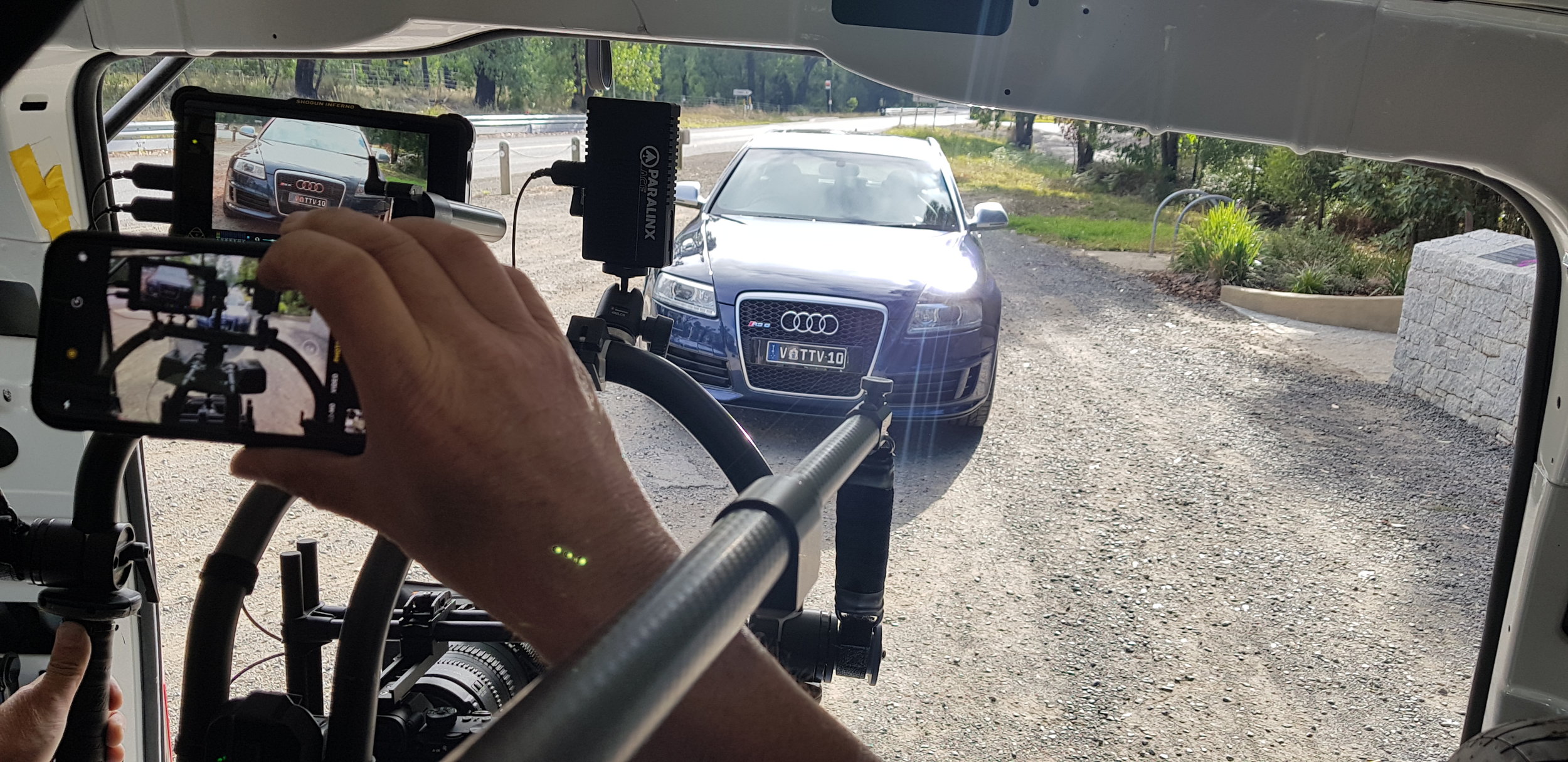
Camera Support
Inside the tube, I’m running with a Manfrotto 502 head with split bowl and carbon legs. The reason for the split bowl is because I’ve got an Edelkrone slider plus, and the split bowl allows me to mount the slider to the top of the legs then put the tripod head on top. Saves me carry another tripod head. For gimbal work, i’m using the Zhiyun Crane v2 with handlebars which is a really solid gimbal pairing with the Sony A7S II.
-
Manfrotto 535 Carbon legs with a split bowl
-
Manfrotto MVH502AH head
-
Edelkrone Slider Plus
-
Zhiyun Crane 2 with handlebars

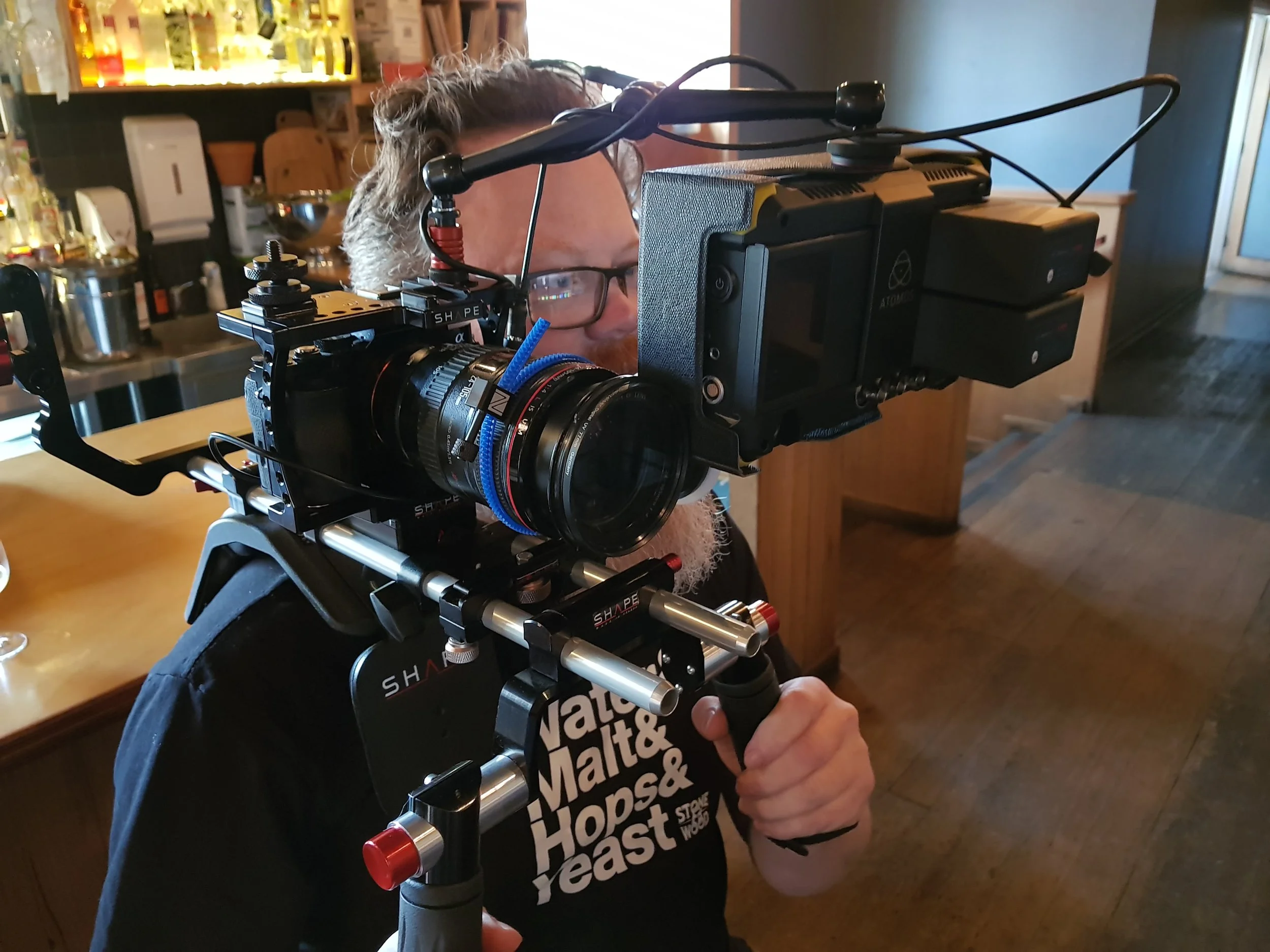
Audio
Keeping location audio light and simple, I’ve got a pair of Rode Filmmaker Wireless Lavaliers, a pair of AKG C1000s condenser mics to put on a boom stand where radio mics aren’t practical and an assortment of Rycote stickies and fluffies for making sure lavalier mics stay put and sound good.
-
2 x Rode Filmmaker Kit Wireless Lavaliers
-
2 x AKG C1000s Condenser Microphones
-
Rycote Stickies and fluffies
-
Rycote Carbon Boom pole

Aerial
I started with the original Mavic Pro which was amazing in it’s own right, but the DJI Mavic 2 Pro is another level again. The Hassleblad camera is so, so good. The thing I love most about this, beyond the stunning images it captures, is its size. Being so small, it means that it’s always in the kit and gets taken absolutely everywhere. That way, if there’s an opportunity for an amazing aerial shot, and local laws and regulations allow, I’ll throw the bird up to get a quick shot.
-
DJI Mavic 2 Pro
-
PGYTech ND for Mavic 2 Pro
-
Samsung Galaxy A tablet
-
Hoodman tablet hood
Power
I carry the usual extension cables and powerboard. I always take a powerboard locally and international as it means I only need one power adaptor.
-
3 x FW50 chargers
-
1 x 4 battery FZ100 charger
-
1 x USB charger with 7 high speed charging ports.
So that’s a bit of a wrap up of the core kit that I carry to every shoot. Sometimes it’s more gear, sometimes it’s less or it shifts slightly, but more often than not, that’s what's in my bag.
Wipster's Position on your Data and Content Rights
A lot has been made recently about Adobe's far-reaching Terms of Service, which grant them the right to access all their customers' content through...


